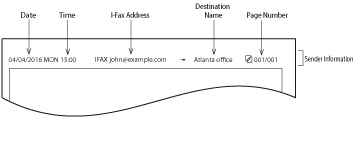Things You Must Do Before Using This Machine
This section describes the important setting registrations and procedures that must be done before the machine is used for sending operations.
IMPORTANT |
If you use the machine without registering the necessary information correctly, the machine may not function properly. |
Network Settings (See "Sending E-Mail/I-Faxes.")
You need to setup a network to send scanned documents to an e-mail address, I-fax address, or file server.
Setting the Display Language
To switch the display language, set [Switch Language/Keyboard On/Off] to 'On' before entering characters. (See "Enabling the Language/Keyboard Switch.")
If you switch [Switch Language/Keyboard On/Off] from 'Off' to 'On' after entering characters, the characters may not appear correctly. In this case, either re-enter the characters after setting [Switch Language/Keyboard On/Off] to 'On', or enter characters with [Switch Language/Keyboard On/Off] set to 'Off'.
If you set [Switch Language/Keyboard On/Off] to 'On', some characters are restricted and cannot be entered.
Registering the Sending Record
You can register a sender information which is printed on a recipient's side when you send a document by I-fax.
The registered information is printed as shown below. Depending upon the model of the machine at the receiving side, this information may also appear on the display while communication is taking place.

Date and Time
The date and time of the transmission are recorded.
I-Fax Address
Your machine's I-fax address is recorded.
Destination Name
If you select a destination from the Address Book to send an original, the name of the stored destination appears on the sending record. (See "Storing New Addresses.")
Page Number
The current page number out of the total number of pages of the original is recorded.
Registering the Unit Name for E-Mail/I-Fax
When you send a document via e-mail or I-fax, the unit name appears or is printed as the sender's name at the recipient's machine. You can register the name of your company or department as the unit name. (See "Registering the Unit's Name for E-Mail/I-Fax.")
Setting the Current Date and Time
You can set the current date and time. (See "Current Date and Time.")
The current date and time settings are used as standard timer settings for functions that require them.
<Time Zone>: | The standard time zones of the world are expressed globally in terms of the difference in hours (± up to 12 hours) from GMT*1 (± 0 hours). A time zone is a region throughout which this time difference is the same. |
<Daylight Saving Time>: | In some countries, time is temporarily advanced throughout the summer season. This practice is called "Daylight Saving Time." |
*1 The time at the Greenwich Observatory in England is called GMT (Greenwich Mean Time).
NOTE |
You can set the machine so that the sending record is not printed. (See "Printing the TX Terminal ID.") If you set the machine to print the sending record at the top of the recording paper, and not all of the items are registered, only the registered items and the total number of original pages are printed. To print the destination's name on the recipient's paper, set <Display Destination Unit Name> to 'On' in [TX Terminal ID]. You can specify to automatically synchronize the date and time with a server on the network. (See "Settings Common to TCP/IPv4 and TCP/IPv6.") If the Local Device Authentication user authentication system of SSO-H is set as the login service and you are sending an e-mail message: The e-mail address of the login user registered for the Local Device Authentication user authentication system of SSO-H appears in the From field on the e-mail recipient's machine, instead of the e-mail address registered in the Device Information settings for this machine. The e-mail address that you registered in the Device Information settings for this machine appears in the From field on the I-fax recipient's machine. The e-mail address of the login user registered for the Local Device Authentication user authentication system of SSO-H is displayed in the Sender field. If the Server Authentication user authentication system of SSO-H is set as the login service and you are sending an e-mail message (including when performing Server Authentication with the 'Server Authentication + Local Device Authentication' user authentication system): The e-mail address that is set for the logged-in user using the Server Authentication or imageWARE Accounting Manager appears in the From field on the recipient's machine, instead of the e-mail address that you registered in the Device Information settings for this machine. The e-mail address that you registered in the Device Information settings for this machine appears in the From field, and the e-mail address that is set for the logged-in user using the Server Authentication or imageWARE Accounting Manager is displayed in the Sender field on the recipient's machine. If you set [Set Authentication User Dest. to Sender] to 'On' in E-Mail/I-Fax Settings, the e-mail address of the login user appears in the From field on the recipient's machine, regardless of the login service. If you set [Set Authentication User Dest. to Sender] to 'Off', the address registered in the Device Information settings is displayed instead. For instructions on storing your machine's e-mail address, see "Common Communication Settings for E-Mail/I-Fax." |